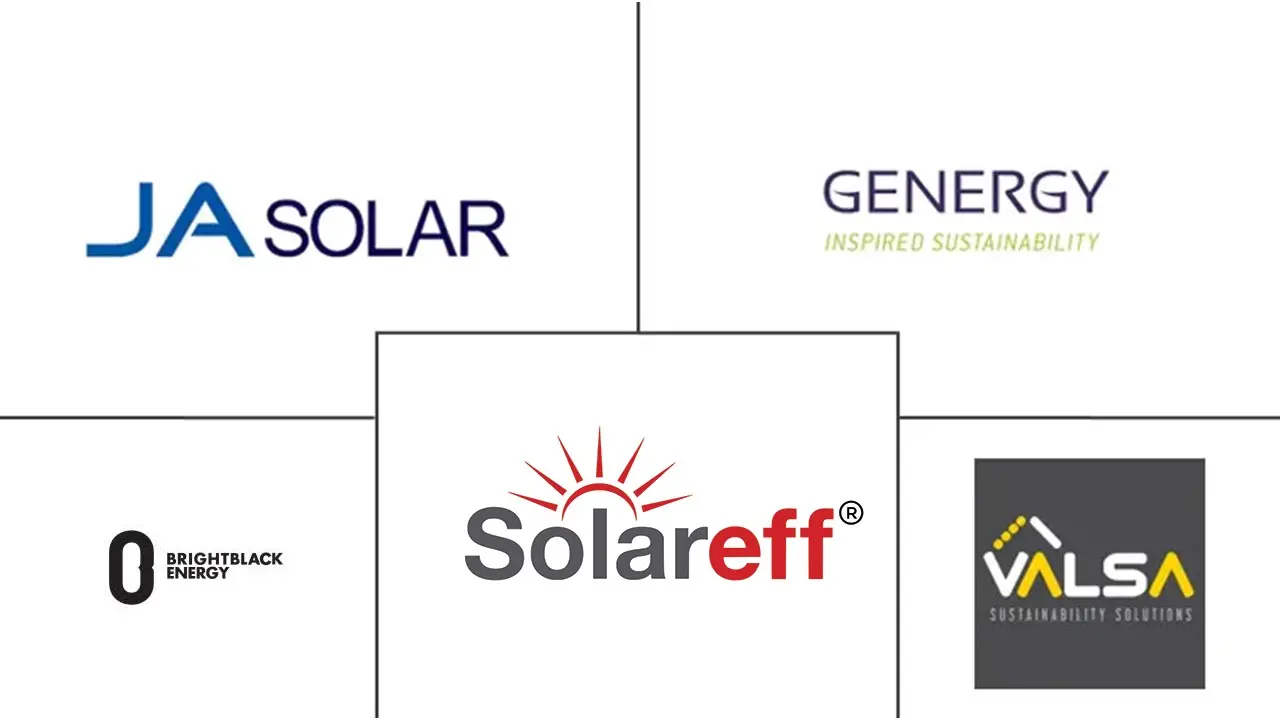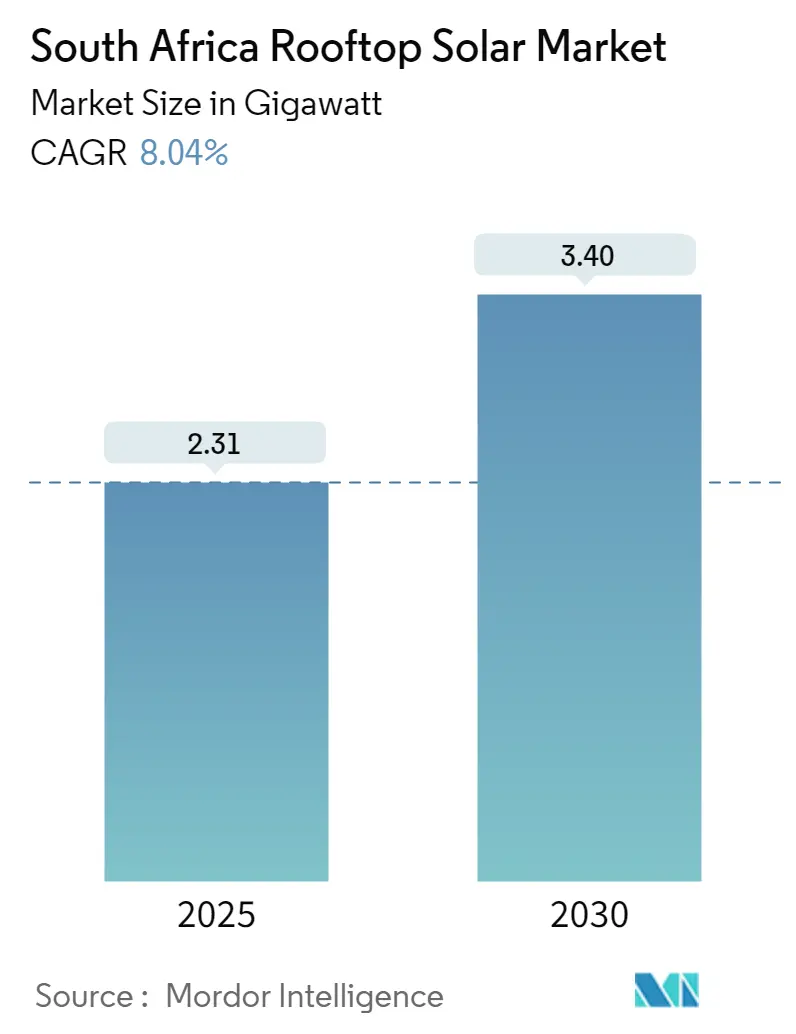
South Africa Rooftop Solar Market Analysis by Mordor Intelligence
The South Africa Rooftop Solar Market size is estimated at 2.31 gigawatt in 2025, and is expected to reach 3.40 gigawatt by 2030, at a CAGR of 8.04% during the forecast period (2025-2030).
Although the market studied was negatively impacted by the COVID-19 pandemic in 2020, it has recovered and reached pre-pandemic levels. The growing government support and falling cost of rooftop solar panels purchase, installation, and maintenance are expected to support the uptake of solar PV and associated systems in South Africa, driving the solar rooftop PV market's growth in the country during the forecast period. However, the high cost of solar rooftop systems and the associated need for batteries for electricity storage are expected to restrain the market's growth.
The increasing blackouts in the country are leading to the electricity crisis. Increasing demand for continuous power is expected to create several opportunities for the market players in South Africa to bridge the supply and demand gap.
South Africa Rooftop Solar Market Trends and Insights
The Commercial and Industrial Segment is Expected to Dominate the Market
As of 2021, the commercial and industrial sectors accounted for more than 50% of the rooftop solar installations in South Africa. Supportive policies and the development of innovative technologies are necessary for the commercial and industrial sector's growth. South African policymakers need to plan for rooftop solar systems and storage rather than just rooftop solar systems with a grid as storage (net/gross metering). The combination is cost-effective for electricity generation compared to the traditional grid supply and diesel generators.
By 2021, solar and storage were cheaper than grid supply for most commercial and industrial customers across South Africa. According to the Institute for Energy Economics and Financial Analysis, the levelized cost of energy for a 1 MW rooftop solar installation, coupled with a 250-kilowatt energy storage system, was estimated at ZAR 1.32 - 1.36/kWh in 2022. The cost of installing solar rooftop systems for commercial and industrial consumers is expected to decline during the forecast period compared to grid tariffs and the cost of the power produced by diesel generators.
The commercial and industrial sector in South Africa is expected to witness significant growth in the market during the forecast period due to affordability and the need for technology. The commercial and industrial sector generally incurs higher electricity costs for being one of the highest energy users. The sector has the best-use profiles and stands to benefit from installing rooftop solar PV systems across large roof spaces.
In March 2022, Investec Property planned to construct a solar PV rooftop plant at Cornubia Mall in Kwa-Zulu Natal, South Africa. The plant is estimated to have a DC capacity of 5.25 MWp and an AC capacity of 4.29 MW and will power the entire mall and reduce stress on the electricity grid.
Rooftop solar systems generate electricity during daylight, coinciding with the peak hours of most factory operations. Hence, while the sun is out, manufacturing facilities can either limit their dependence on the national grid or abandon it.
Commercial and industrial organizations across South Africa are gradually seeking opportunities to reduce their dependence on the state utility, which has been facing financial and operational issues.
In South Africa, commercial and industrial enterprises have many options to finance their electricity requirements. Rooftop solar systems remain the most favorable alternative to grid electricity in the country.
A growing number of commercial properties in South Africa are opting for fixed-roof rental options. Here, the unused roofs are monetized through a long-term rental agreement. The energy generated is used by the commercial property, and excess energy is sent to the grid for further distribution.
The South African government identified the significant potential of solar energy and is making efforts to increase the adoption of solar photovoltaic (PV) technology in the country's power sector.
Until the introduction of the Renewable Energy Independent Power Producers Program (REIPPP) in 2011, the solar power sector was nearly non-existent. However, after the program's start, with different rounds like IPP1 with 626 MW, IPP2 with 417 MW, IPP3 with 435 MW, IPP4 with 813 MW, and IPP small with 80MW, the installed capacity for the utility-scale solar PV reached more than 2.37 GW as of May 2022. The development of such agreements in South Africa is expected to boost the demand in the commercial and industrial sectors during the forecast period.
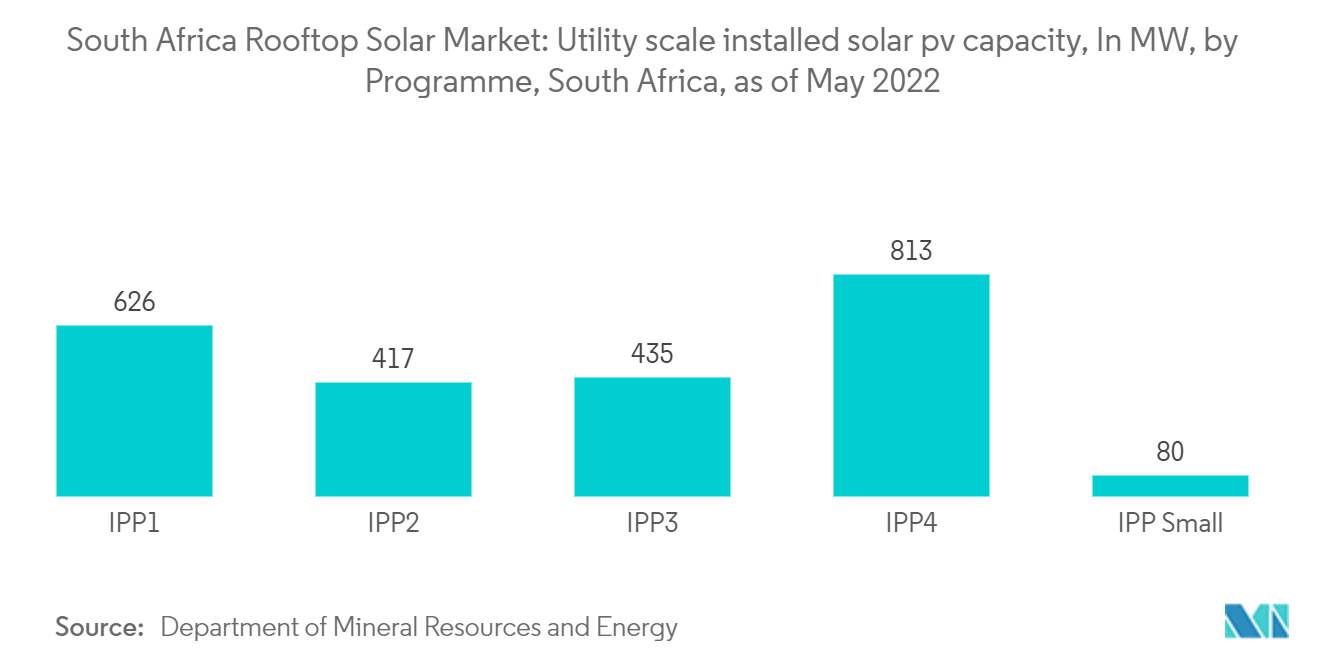
High Domestic Solar Potential is Expected to Drive the Market's Growth
South Africa is a large country with a low population density, and due to its geographical position, the country receives a high amount of solar irradiation throughout the year. The South African government has identified the high photovoltaic potential of the country, and efforts are underway to maximize the utilization of the country's solar potential by accelerating the country-wide adoption of rooftop solar PV capacity.
South Africa has an average of more than 2,500 hours of sunshine per year, and the average solar radiation levels range between 4.5 and 6.5 kWh/m2 per day. The country's Northern Cape is one of the most attractive solar resource areas, with a daily average solar PV output capacity above 5.6 kWh/kWp.
As South Africa's climate results in year-long sunshine, the annual 24-hour global solar radiation average is about 220 W/m2. This is significantly higher when compared to certain regions in the United States (150 W/m2), Europe, and the United Kingdom (<100 W/m2).
However, due to rising energy consumption, South Africa faced an acute energy shortage, with 1130 hours of planned power cuts experienced in 2021. In March 2022, ESKOM declared that it planned 61 days of load-shedding between April 1, 2022, and August 31, 2022.
To combat this power crisis and provide energy security to its citizens, the government has been actively promoting the adoption of rooftop solar PV systems in the residential and commercial sectors. The South African government has already committed to a target of achieving net-zero emissions by 2050 and set a concrete target of an increase in the share of renewable energy from the current state of 11% to about 41% of the total electricity generation by 2030 with the hope to reduce the share of fossil fuels from 80% to about 51%. Solar PV is expected to account for nearly 8,288 MW of this total planned renewable capacity.
Most remote and indigenous communities have started to switch to rooftop solar photovoltaics to provide energy security in off-grid regions. South Africa has a huge mining industry; most mineral resources and mines are situated in the interior of the country, and the mining companies are another significant user of solar PV panels. Due to the ongoing electricity crisis, many commercial and industrial consumers are starting to invest in the installation of rooftop solar PV panels in roofs in their buildings and other facilities to power operational requirements.
The South African solar energy capacity rose from 3450 MW in 2017 to 6221 MW in 2021, registering a growth rate of 80%.
In April 2022, Apple continued accelerating its transition toward carbon neutrality across its entire global supply chain. As part of its Power for Impact program, Apple provides local communities around the world with access to renewable energy. Solar projects in South Africa provide affordable and reliable electricity to communities suffering from significant energy challenges. In the densely populated township of Diepsloot, new solar installations have provided access to electricity to 3,500 households.
Such efforts and investments to guarantee energy security by capitalizing on the country's high photovoltaic potential are expected to drive the growth of the South African rooftop solar market during the forecast period.
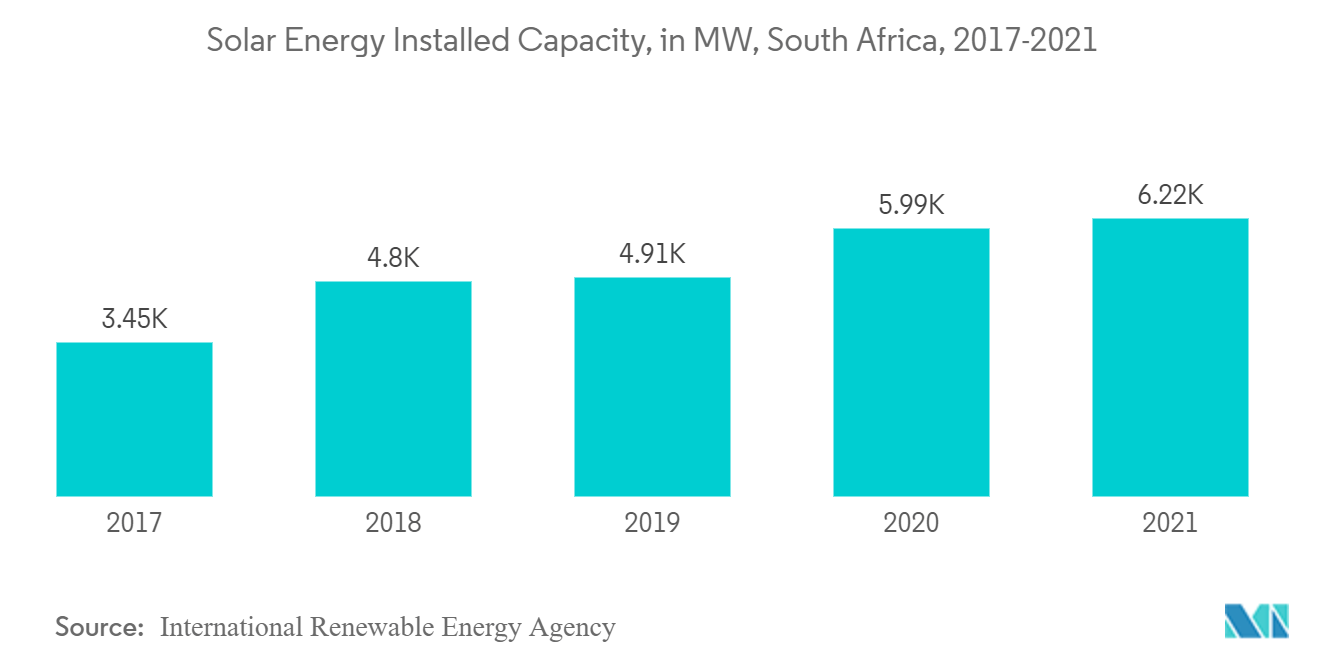
Competitive Landscape
The South African rooftop solar market is moderately consolidated in nature. Some of the key players in the market (in no particular order) include GENERGY, Valsa Trading (Pty) Ltd, JA Solar Holdings, Solareff (Pty) Ltd, and BrightBlack Energy, among others.
South Africa Rooftop Solar Industry Leaders
-
GENERGY
-
Valsa Trading (Pty) Ltd
-
JA Solar Holdings
-
Solareff (Pty) Ltd
-
BrightBlack Energy
- *Disclaimer: Major Players sorted in no particular order
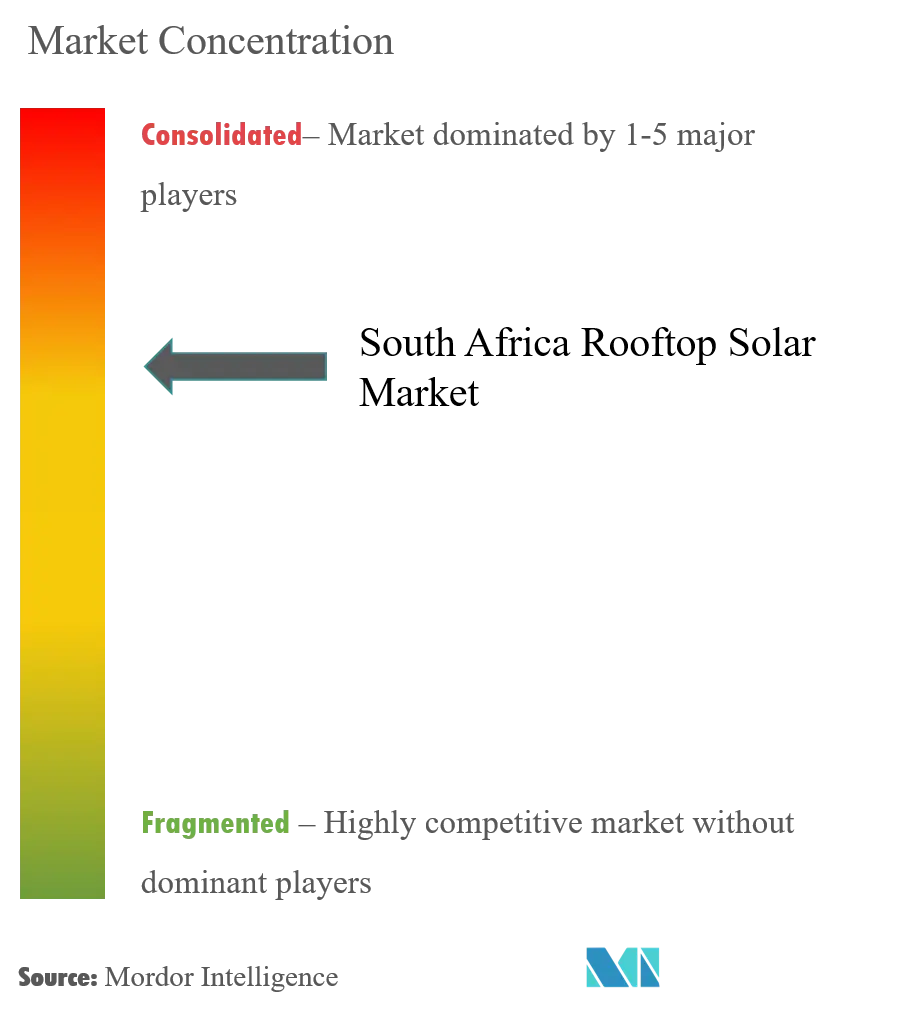
Recent Industry Developments
- March 2022: Investec Property planned to construct a solar PV rooftop plant at Cornubia Mall in Kwa-Zulu Natal, South Africa. The plant is estimated to have a DC capacity of 5.25 MWp and an AC capacity of 4.29 MW and would power the entire mall and reduce stress on the electricity grid.
South Africa Rooftop Solar Market Report Scope
Rooftop solar PV is a photovoltaic system with electricity-generating solar panels mounted on the rooftop of a commercial or residential building. It captures the sun's light energy and converts it into electrical energy.
The rooftop solar PV installations market is segmented by end user. By end user, the market is segmented into residential and commercial and industrial. For each segment, the market sizing and forecasts have been done based on installed capacity (MW).
| Residential |
| Commercial and Industrial |
| By End User | Residential |
| Commercial and Industrial |
Key Questions Answered in the Report
How big is the South Africa Rooftop Solar Market?
The South Africa Rooftop Solar Market size is expected to reach 2.31 gigawatt in 2025 and grow at a CAGR of 8.04% to reach 3.40 gigawatt by 2030.
What is the current South Africa Rooftop Solar Market size?
In 2025, the South Africa Rooftop Solar Market size is expected to reach 2.31 gigawatt.
Who are the key players in South Africa Rooftop Solar Market?
GENERGY, Valsa Trading (Pty) Ltd, JA Solar Holdings, Solareff (Pty) Ltd and BrightBlack Energy are the major companies operating in the South Africa Rooftop Solar Market.
What years does this South Africa Rooftop Solar Market cover, and what was the market size in 2024?
In 2024, the South Africa Rooftop Solar Market size was estimated at 2.12 gigawatt. The report covers the South Africa Rooftop Solar Market historical market size for years: 2021, 2022, 2023 and 2024. The report also forecasts the South Africa Rooftop Solar Market size for years: 2025, 2026, 2027, 2028, 2029 and 2030.
Page last updated on:
